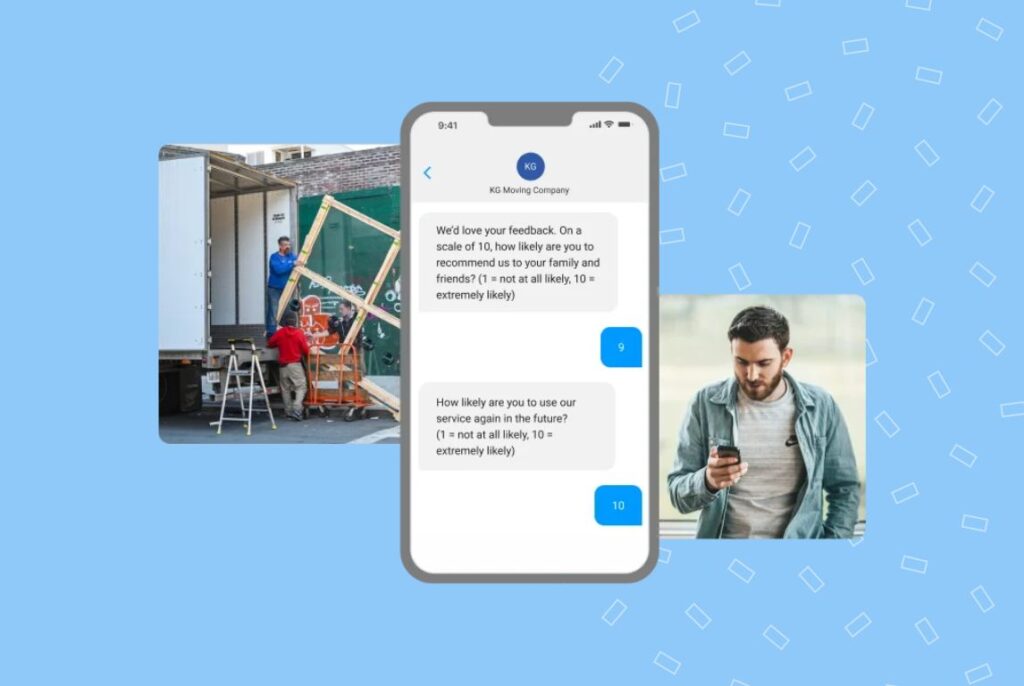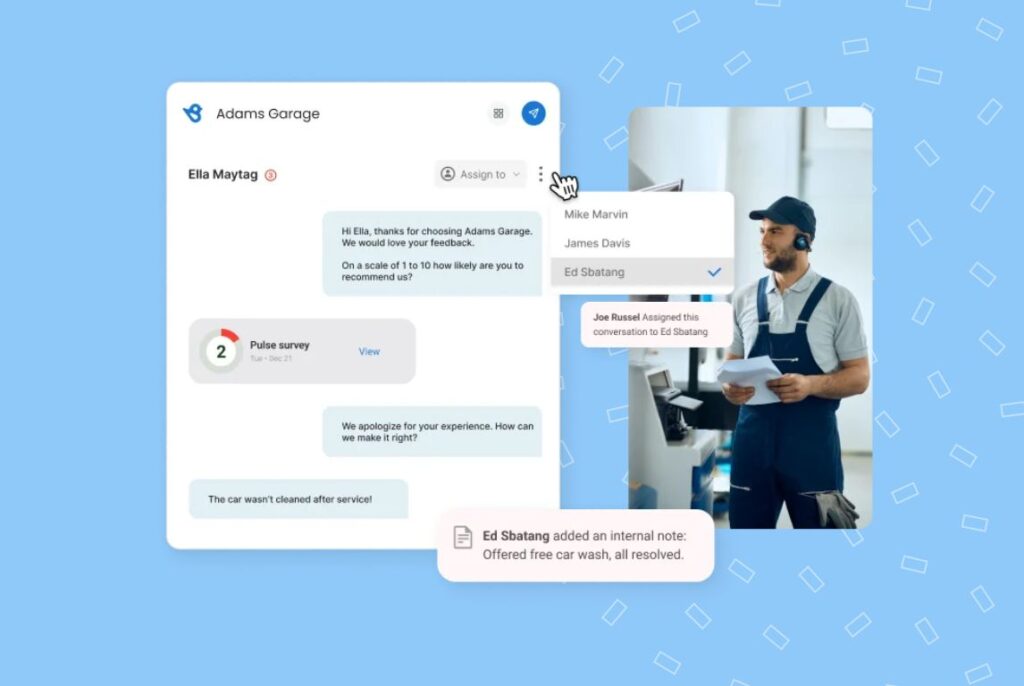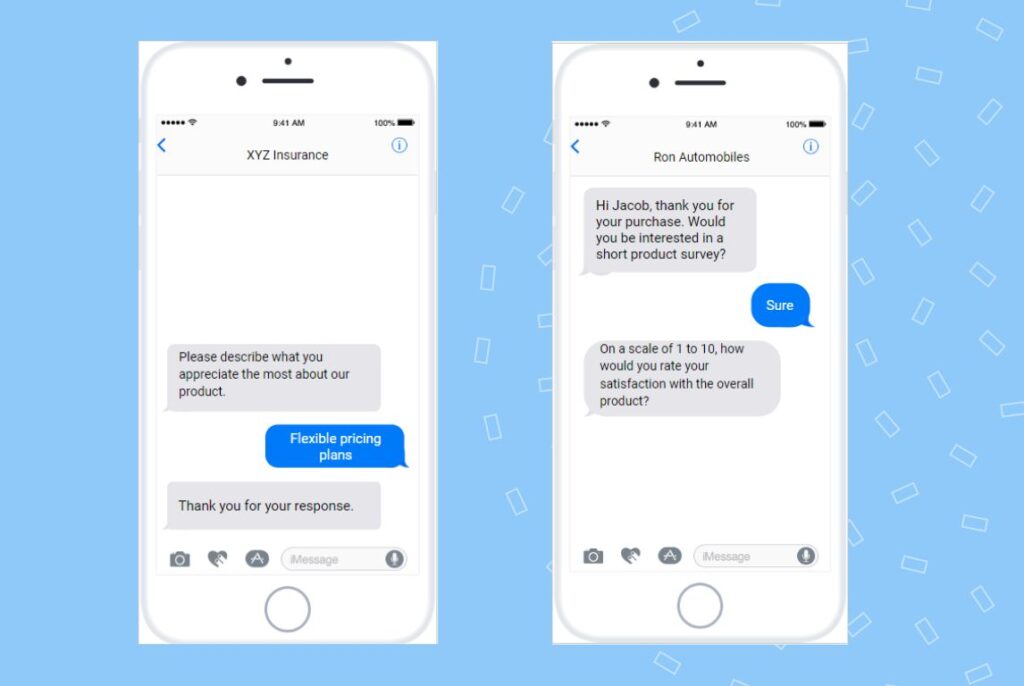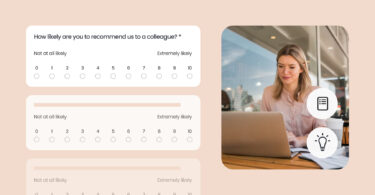Knowing your audience is essential for a business. But knowing how your customers feel about you is even more critical. That is why businesses must conduct regular product surveys and collect customer feedback. This can be done across all stages of development – pre-launch, launch, post-launch, and with existing and potential customers too.
Surveys are essential to understanding customer requirements, sentiment, and pain points and discovering new opportunities.
This blog post explores product surveys and equips you with the top product survey questions to use in 2023.
Better your Business with Customer Feedback
Want to see the impact of Birdeye on your business? Watch the Free Demo Now.
Table of contents
What is a product survey?
A product survey is a tool businesses use to understand what their customers think of their products and services. It is typically in the form of a questionnaire.

Businesses conduct different types of surveys to collect customer feedback such as brand surveys, user experience surveys, customer experience surveys, and more. But, product surveys help your businesses receive product feedback to know customer satisfaction, needs and wants. You can also use a product survey to create new ideas, designs, pricing, and order placement.
Why is a product survey important?
Product surveys play a vital role in business development, understanding customer behavior, and creating products that match the needs of your target audience.

Here are a few benefits of product surveys for a business:
- Helps measure customer satisfaction: If you’re curious whether customers are satisfied with your product, a product survey is the way to go. It’s an effective way to determine how your customers feel about the product and what you can do to improve it.
- Measures performance: A survey helps measure the performance of a product over time. You can gauge its impact on customers over the long run. This way, you’ll better understand your product’s strengths and weaknesses to create improvements.
- Determines operational efficiency: Product surveys also help determine your company’s effectiveness. Using this information, you can improve performance and staff retention.
- Better understand your customers: One of the perks of product surveys is the access they give you to genuine insight into your customers. Not only will you know who your customers think or feel about your products, but you will also know what they prefer to buy. You can make helpful improvements that will influence their purchasing decisions.
- Identify new ideas for features and improvements: Product surveys are an excellent way to source ideas from your loyal customers. They help you brainstorm with your regular users. Get inspired to venture into new, creative ideas when it’s all said and done.
How to design the perfect product survey questions?
The questions you put on your product survey will depend on your objectives for the exercise. To get you started, we’ve compiled some best practices you can adopt to design a beneficial product survey template.
Include a variety of questions
Product survey questions vary in kind. Use a variety of them to glean different insights from your customers.
For example, close-ended questions are often restrictive. But sometimes, that’s what you need when looking for simple, direct answers. Open-ended questions, on the other hand, encourage more in-depth explanations.
Keep it simple
Make sure your product survey questions are simple and easy to understand for everyone. Ideally, your customers should be able to quickly read through your questions and know exactly what you are asking. Avoid technical jargon and complex words.

Keep the question open-ended
Open-ended product survey questions allow the customer to let loose when they share their thoughts, ideas, feelings, and opinions on your products. They provide a platform for a customer’s point of view. The answers you receive will be more diverse and revealing.
Do not ask leading questions
Ask unbiased product survey questions that do not feed any answers to customers. We call these questions leading questions as they prohibit customers from giving honest answers.
For example, instead of ‘Why do you love this product?’ you could say, ‘What’s your honest opinion about this product?’. Leading questions tend to sway a customer’s opinion about a product. Instead, you’re looking for an honest, objective opinion.
Be transparent
Keep your product survey questions transparent so the customer understands the purpose of the survey. When customers clearly know what you’re asking and why, they’ll trust the survey creator. They’ll likely be more honest and provide meaningful and enlightening information.
Monitor and refine questions
Monitor the product feedback to ensure the survey generates relevant and reliable responses. By keeping track of trends, the survey team can pinpoint any problems. The team can then refine the questionnaire to improve its impact.
Appeal to a wide range of audience
Make your product survey inclusive by using questions that appeal to a diverse audience. The questions should capture insights from people with varying backgrounds, experiences, and preferences. Your company will better understand the customer’s needs and preferences and create products catering to a diverse customer base.
20+ product survey questions to ask
Product survey questions come in many shapes and sizes. There is no one size fits all approach here. Ideally, product survey questions should help you answer all questions you have about your customer base.
We’ve compiled some product feedback survey questions you can ask your customers. Use these questions to gain insightful feedback to enhance your products and increase customer satisfaction.
Please describe what you appreciate/like the most about our product.
Use this question to identify a product’s strengths and positive aspects from the customer’s view. It also highlights user experience by focusing on the features, functions, and qualities the customer loves the most.
Please describe what you do not appreciate/dislike the most about our product.
This question will help your business understand where you need to improve. And it helps you focus on enhancing the customer’s experience.
Users can express their concerns, frustrations, and aspects they find unnecessary about a product. You can use this feedback to your advantage to identify and prioritize areas of improvement.
On a scale of 1 to 10, how would you rate your satisfaction with the overall product?
You can use this question to put a number on customer satisfaction levels. With this, you can measure overall customer satisfaction and the product’s performance.
Not only that, but you can also use this question to identify trends and track changes. With the results, you’ll be able to make decisions to help improve customer satisfaction.

What are your reasons for choosing this product?
Use this question to understand what factors influence a customer’s decision-making process. Unearth the motivations, features, and preferences that attract customers to a product. This highlights your product’s competitive advantage.
What do you see as the most valuable feature of the product?
This question lets your customer express an opinion about the specific features that stand out to them and provide the most value. You can use this information to understand which features resonate the most with the customers.
The knowledge you collect will improve product development. You can also use this information to develop marketing to attract and retain customers.
How often do you use the product?
This question will help you know how often customers use your product.
You’ll understand more about power users and areas of improvement. You can also gauge customer loyalty. This information influences product development, customer engagement, and marketing strategies.
On a scale of 1 to 5, how would you rate the product as a value for money?
You’ll know more about what your customers think about your product’s affordability and value. Use a rating scale so that customers can provide a quantifiable measure of the product’s value about the cost. You can adjust pricing strategies, competitive positioning, and net promoter score.

How did you discover the product?
This question highlights the channels through which customers encounter or interact with the product. It offers insights into the marketing and promotional efforts to reach and attract customers. This information helps enhance marketing strategies, target the right audience, and maximize product visibility.
How easy is it to use/navigate the product?
The question looks into the user-friendliness and general usability of the product. You can gain insight into the product’s intuitiveness, instruction clarity, and user experience. Your product manager can use this information to improve the customer’s experience, product design, and customer satisfaction.
What features, in your opinion, are missing from the product?
Use this question to gather information on potential areas of improvement. You’ll be able to focus on product development decisions and feature additions. And you’ll be able to match updates with customer feedback.
What problem/need does the product address for you?
With this question, you can know the pain points that the product fulfills. It helps your business to understand the customer’s perspective better.
You’ll know how the product solves a problem, meets a need, or solves a product. Use customer feedback for product development and enhancement. Make sure the product continues to meet customer needs.
How would you describe the product in your own words?
Allow customers to share their unique descriptions of the product. Get insights into how customers view the product’s value proposition, features, benefits, and general essence. Use this information to help your business adopt more authentic customer language into its marketing strategies to better resonate with the audience.
Have you tried a similar product before purchasing our product?
Understand the customer’s previous experiences with similar products in the market. And gain more insights into customers’ comparative experiences, preferences, and expectations.
Use this information for product positioning and competitive analysis. Identify opportunities to make your product stand out from your competitors.
What features do you prefer in our product over others in the market?
This question highlights a product’s competitive advantages and selling points from the customer’s perspective. This question focuses on customer experience and uncovers what sets the product apart. You can use this information in marketing strategies.
Are you satisfied with the clarity of our pricing?
Assess the user feedback on the pricing structure with this question. You can use it to
- Focus on customer experience and customer satisfaction.
- Gauge whether the customer finds the pricing information easy to understand and fair.
- Refine your pricing communication, ensure transparency, and improve your net promoter score.
Please mention your reasons if you switched from a similar product to ours.
Understand the factors motivating a customer to switch to a competitor’s product. This question ties into competitive analysis, customer insights, and marketing.
Use this question to understand your competition’s strengths and weaknesses better. Then, tailor marketing messages to highlight your product’s value proposition.
Did the product experience match your expectations?
Use this question to see whether customer expectations align with their experience with the product. With it, you can focus on the user experience and customer satisfaction.
When businesses understand the customer’s perception of how the product met their expectations, they can make necessary adjustments to enhance the customer experience.

How would you improve the functionality of our product?
Help gather ideas on potential improvements to a product’s features with this question. Highlights user experience, product development, and innovation. Customer feedback on functionality improvements can help you gain insights into desired features, pain points, and customer needs.
Would you be willing to purchase the product even with a price increase?
Get a feel for customers’ price sensitivity, willingness to pay more for the product, and perceived value. Use this question to learn information that relates to pricing strategy and customer retention. Businesses can use this information to make informed pricing adjustments that align with customer expectations.
On a scale of 1 to 10, how helpful was the product information provided to you?
Focus on assessing the effectiveness and usefulness of the product information presented. It highlights customer engagement, user experience, and marketing effectiveness. Use this information to refine your communication. Improve clarity to be sure a customer has all the information they need to make an informed decision.
Did the product reviews help you make the final purchase decision?
Understand the influence and impact of product reviews on customers’ decision-making process. You can use this question to focus on customer research, user experience, and marketing effectiveness. Figure out how critical product reviews are. Then, learn how to leverage them to boost your credibility.
How would you feel if you could no longer use our product?
Gauge the customer’s dependency level on the product with this question. Know about customer sentiment, loyalty, and user experience. Develop customer retention strategies and product improvements. Build long-term customer relationships.
What other products did you consider before purchasing our product?
Understand the competitive landscape and the alternatives customers are likely to explore. Focus on market research, competitive analysis, and customer preferences. You can get to know your position in the market and refine your marketing strategies.
What is the most important product feature according to you?
Know all aspects of the product the customer prioritizes and values the most. You’ll find this helpful in product development, marketing, and making sure vital features resonate with the audience. Use this information to enhance particular features to meet the customer’s expectations.
FAQs about product survey
Three parts of a new product survey are product introduction, survey questions, and information that details customer characteristics like age, gender, and location.
A product feedback survey focuses on gathering good and bad opinions related to a product. A customer survey is about understanding the customer’s experience with a business or brand.
A leading question could be, “What are your thoughts on our new products’ impressive design?” The question assumes the product is innovative and subtly guides a customer’s response toward being positive.
Build intuitive surveys with Birdeye
Customer feedback through product surveys is critically important. They help businesses better understand customer satisfaction and improve problem areas. It is critical for business growth that they create, send, and collect feedback regularly through surveys.
With Birdeye Surveys, you can create, automate, and analyze surveys in a flash. With customizable templates and integration with 3000+ software systems, Birdeye is the product for businesses of all sizes.
Originally published






![[Feature image] The best AI tools for business in 2025 A complete guide for productivity, content, and growth](https://birdeye.com/blog/wp-content/uploads/Feature-image-The-best-AI-tools-for-business-in-2025-A-complete-guide-for-productivity-content-and-growth-375x195.jpg)


